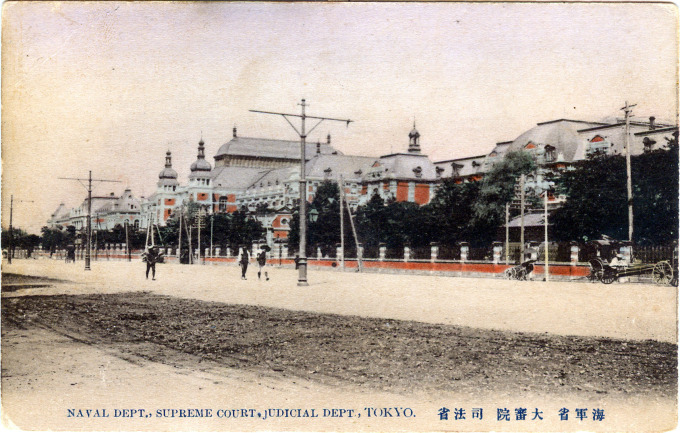
Government ministries along one side of Sakurada-dori (from left to right): the Justice Ministry (Shihōshō), the Supreme Court (Taishin), and the Navy Ministry.
See also:
Josiah Conder: Department of the Navy, Kasumigaseki, c. 1910
Ministry of Communications, c. 1910.
The imposition of “unequal treaties” on Japan by the West in the 1850’s and 1860’s provided the impetus to modernize (i.e. “Westernize”) the nation’s legal codes and government institutions. With the promulgation of the Meiji Constitution in 1890, Japan marked the end to nearly 40 years of extra-territorial concessions to Western powers. The authority of the hanbatsu [clan], which had ruled Japan in a feudal fashion for 250 years, was formally replaced by the establishment of a parliamentary monarchy based on English and German models. Concurrent with the creation of a modern Western-influenced bureaucracy was the construction of Western-influenced buildings from which Japan’s new bureaucrats would administrate and supervise Japan’s modernization.
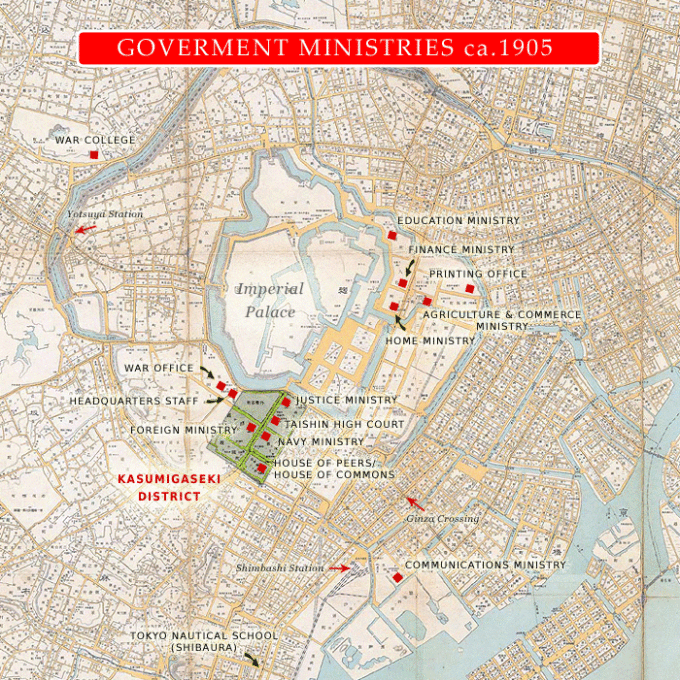 As Japan began its modernization, the Meiji government set land aside at Hibiya for a kanchogai [government village] but engineers found the subsoil too soft to support the weight of the planned structures. (The area, originally an inlet of Tokyo Bay, had been reclaimed from the bay using landfill collected during the massive Kanda canal project completed in the 17th century.) Land further to the west, at Kasumigaseki [gate of mist], was instead repossessed from former daimyo [provincial lord] estates.
As Japan began its modernization, the Meiji government set land aside at Hibiya for a kanchogai [government village] but engineers found the subsoil too soft to support the weight of the planned structures. (The area, originally an inlet of Tokyo Bay, had been reclaimed from the bay using landfill collected during the massive Kanda canal project completed in the 17th century.) Land further to the west, at Kasumigaseki [gate of mist], was instead repossessed from former daimyo [provincial lord] estates.
These grounds, along with other former daimyo acreage encircling the Imperial Palace grounds, would be those upon which the Meiji reformers would literally build their government. Unlike the latter years of the Meiji era, when ministries and other offices of government were sited in a perimeter around the Imperial Palace, today all three branches of the government — the legislative, judiciary, and executive — are located within the confines of the Kasumigaseki district. Of the original late Meiji era ministries, it is only the Justice Ministry that remains on the same site today as it did in 1910.
- Diet, House of Peers, c. 1910.
- Diet, House of Representatives, c. 1910.
- Justice Ministry, Kasumigaseki, c. 1910.
- Taishin High Court, Kasumigaseki, 1904.
- Navy Ministry, Kasumigaseki, c. 1910. Designed by Josiah Conder.
- Foreign Ministry, c. 1910.
- Council of War, c. 1910.
- Army Ministry, c. 1910.
- Communications Ministry, c. 1910.
- Home Ministry, c. 1910.
- Education Ministry, c. 1910.
- Finance Ministry, c. 1910.
- Agriculture & Commerce Ministry, c. 1910.
- Tokyo Military School, c. 1910.
- Tokyo Nautical School, astride Shibaura, c. 1910.


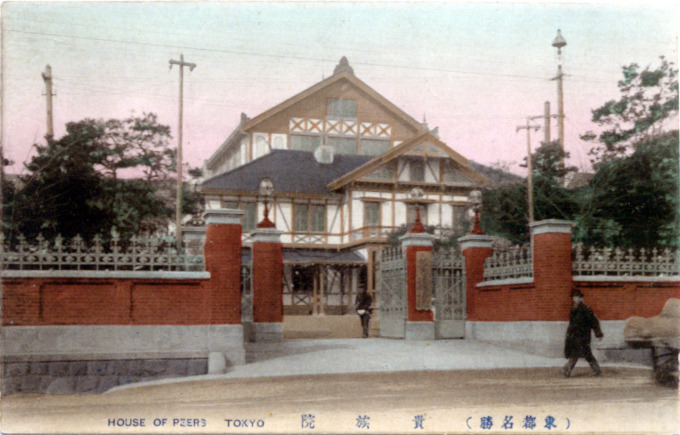
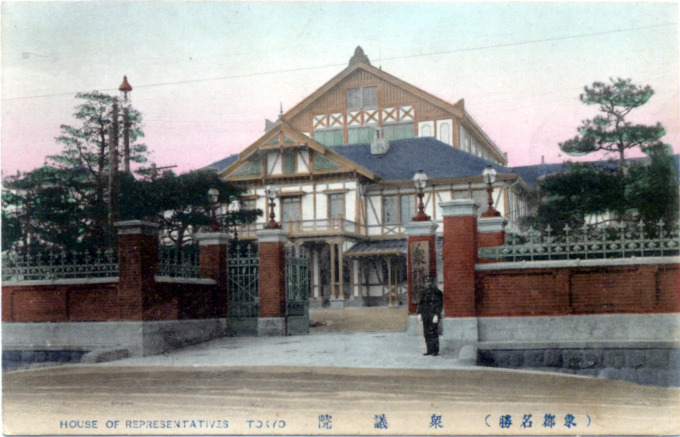
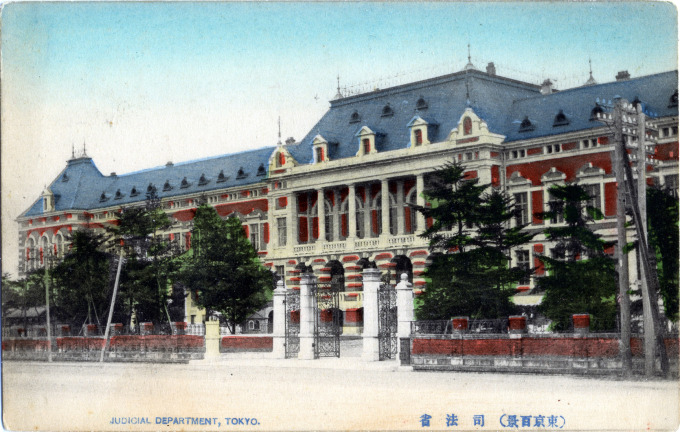
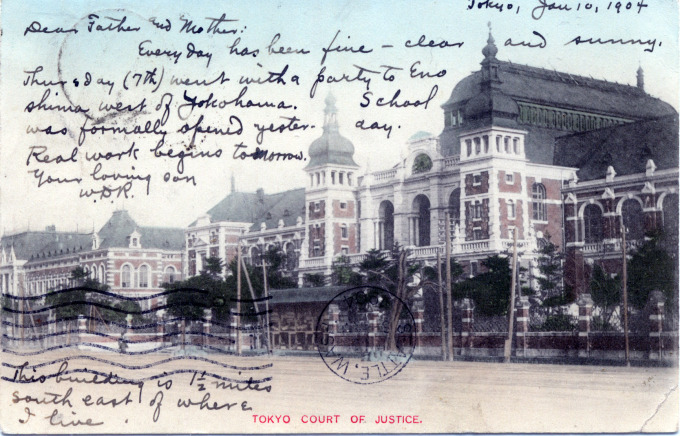
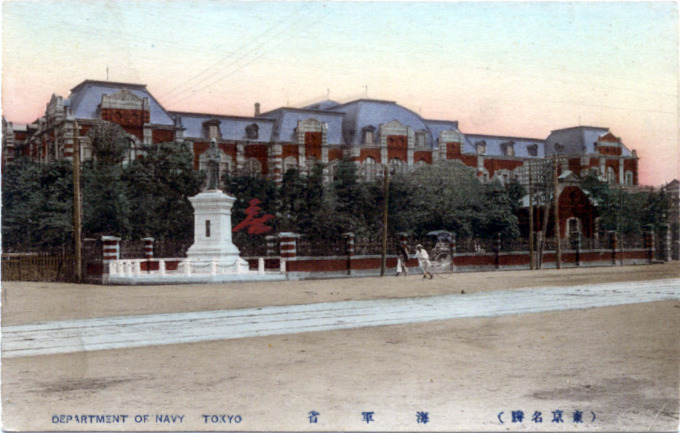
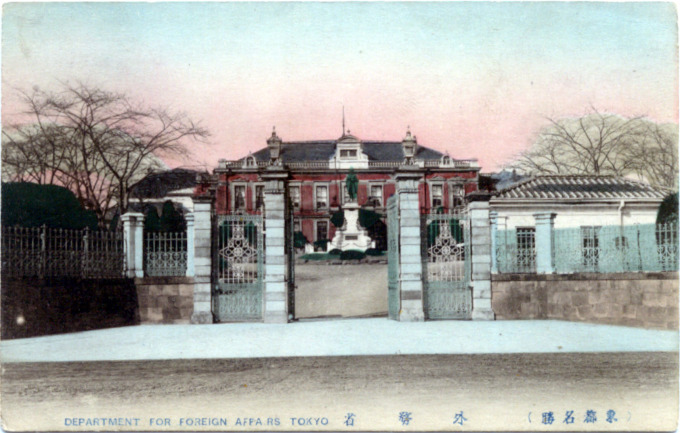
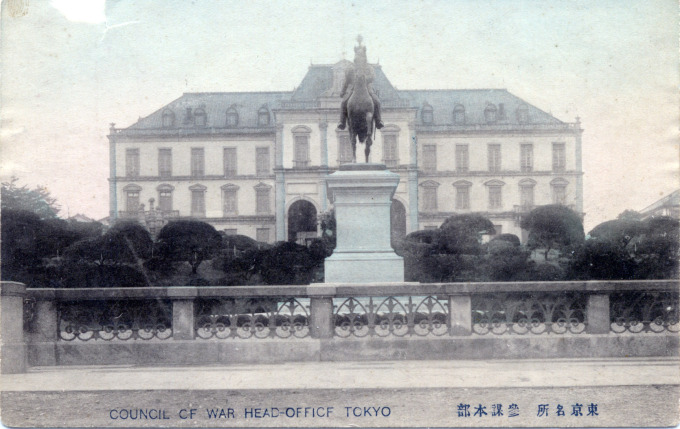
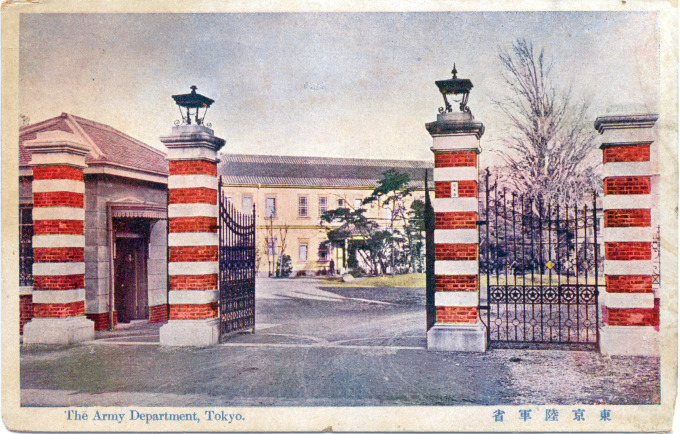
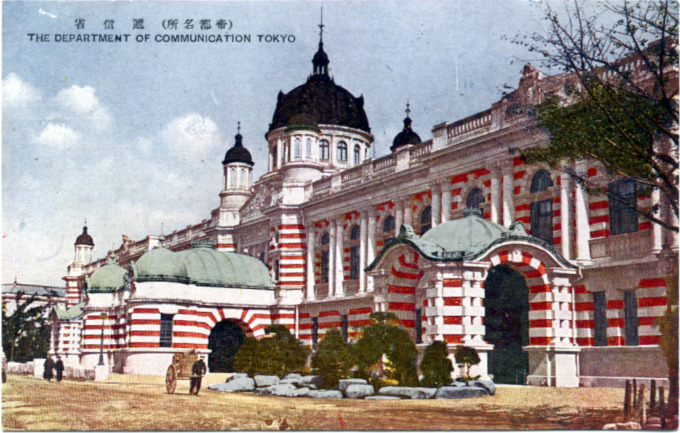
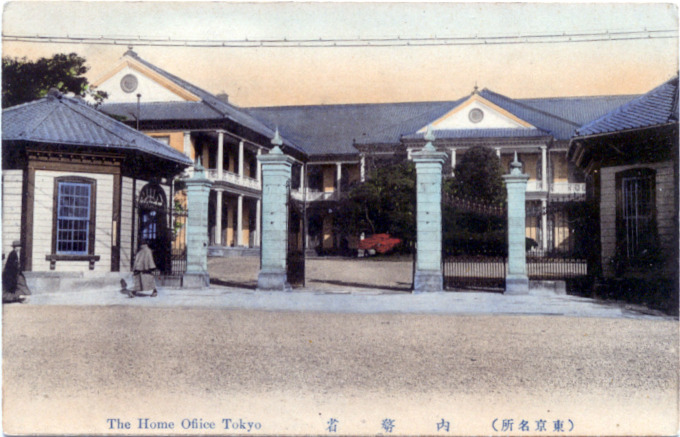
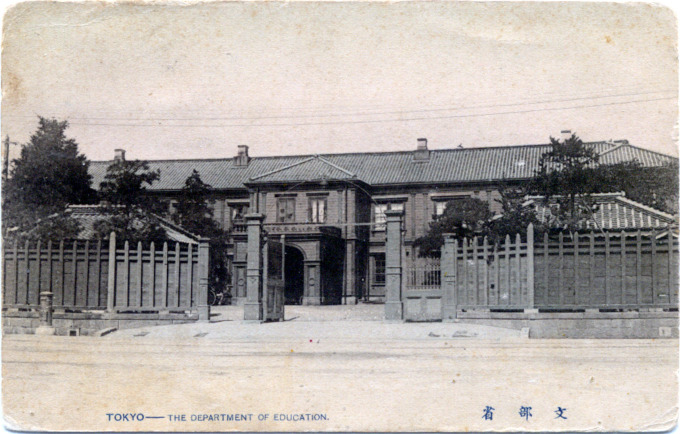
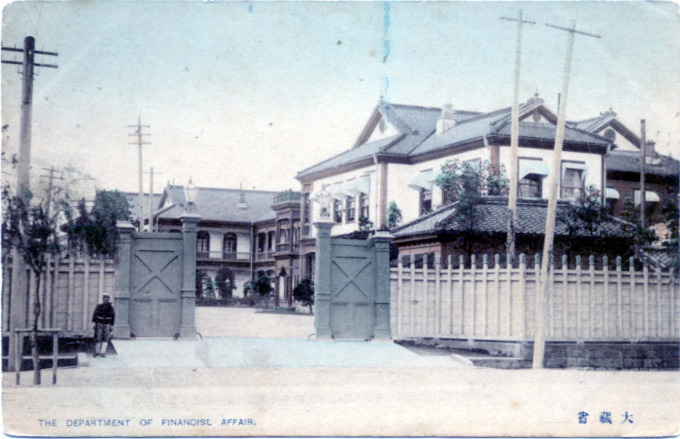
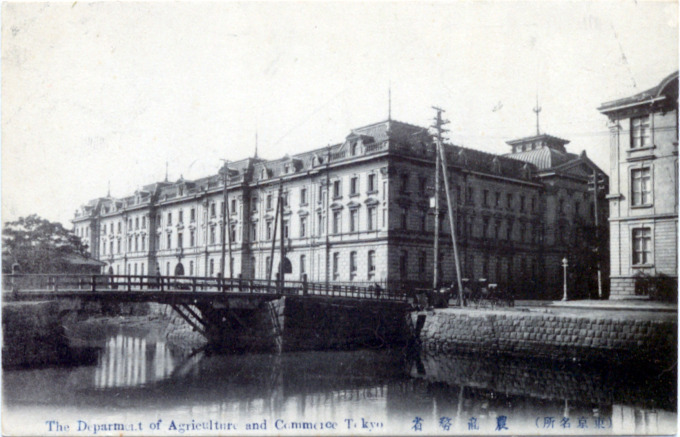
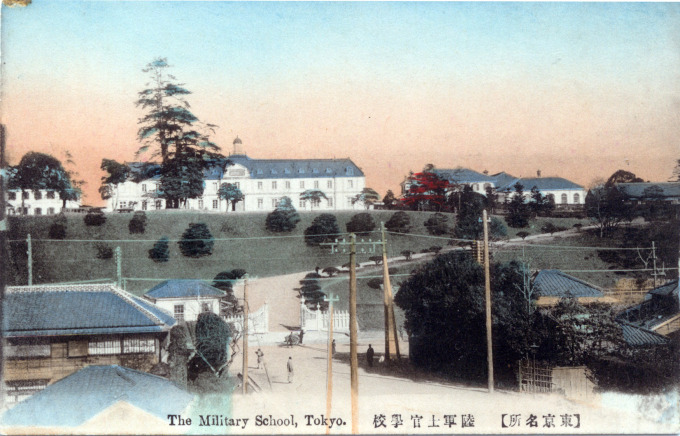
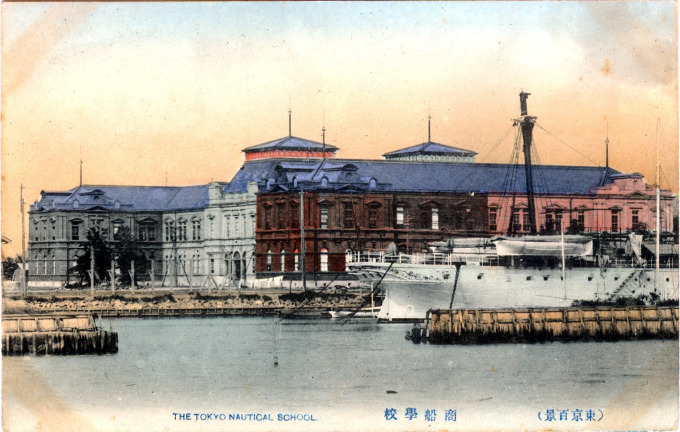
Pingback: Imperial Diet Building, Kasumigaseki. | Old Tokyo
Pingback: Taishin-in (Supreme Court, or Court of Cassation), c. 1910. | Old Tokyo
Pingback: Hibiya Park, c. 1910. | Old Tokyo
Pingback: Justice Ministry, Kasumigaseki, Tokyo, c. 1910. | Old Tokyo
Pingback: Printing Office, Tokyo, c. 1910. | Old Tokyo
Pingback: Koban (police box) system in Japan. | Old Tokyo